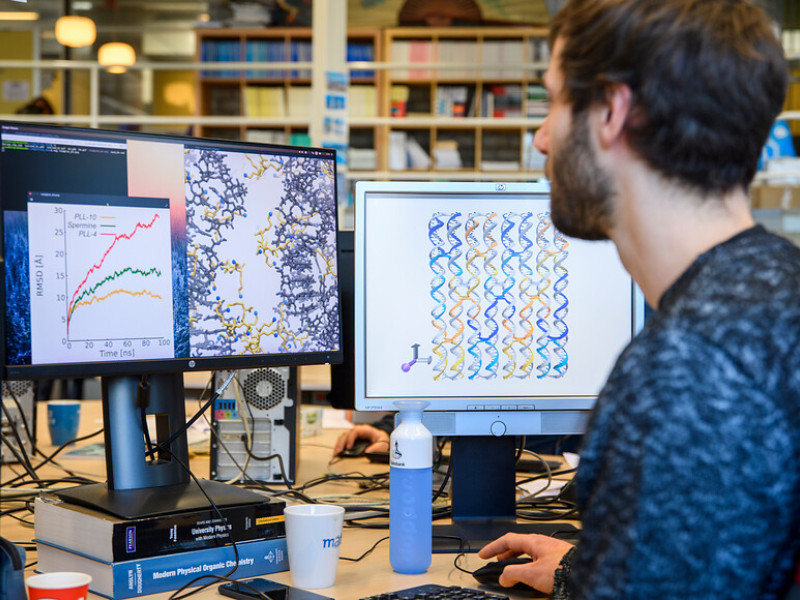Solutions for virtual research environments
Researchers can easily and safely collaborate on research projects online thanks to collaboration between research institutes, university medical centres, and higher education institutions. These organisations increasingly provide digital (or virtual) research environments, where researchers can store, edit and share data online.
SURF is an important link in this process. We have established a common vision and provide components with which these digital and virtual research environments (DREs and VREs) can be compiled and linked together. This makes joint online research simple, fast, and safe.
Vision on online research environments
What will online research environments look like in five years? Based on discussions with a large number of stakeholders from the SURF community, we have drawn up a vision of the direction to 2027, which in summary looks like this:
By 2027, we envisage a VRE ecosystem of portals and platforms that comply with national and international standards so that researchers can easily collaborate with good access to data and software in repositories. This will require national coordination of the ecosystem, including developing a VRE target architecture with its members, encouraging federated collaboration and concluding appropriate software licences. The VRE ecosystem must be organised in such a way that innovation of parts remains possible.
- Read the vision paper: “Virtual Research Environments in 2027” (PDF, in Dutch)
- Read the summary of the vision paper: "In brief - Virtual Research Environments in 2027. SURF's vision" (PDF, in Dutch)
Naturally, this vision is not set in stone. In the coming years, we will continue to discuss the theme of research environments with SURF members.
SURF Research Cloud: brick box for DREs & VREs
SURF Research Cloud is a self-service platform that allows research organisations and researchers to build their own virtual research environment. SURF Research Cloud's online catalogue brings together preconfigured workspaces, functionalities, and datasets. These facilities are offered by institutions, research communities, SURF, and market parties. As a researcher or institution, you can combine those building blocks into a customised VRE.
Institutions, research communities, and suppliers can contribute to the functionality and catalogue of the SURF Research Cloud by including their computing and data services and making them accessible to others. SURF's online research tools, market parties, and research institutions come together in this way. This multiplicity of providers means that there is freedom of choice and the risk of vendor lock-in is reduced.
Underlying building blocks
SURF deploys various underlying systems to help our members with their DREs/VREs. For example, researchers can carry out their data operations and analyses on our HPC Cloud, servers, and computing clusters. Research data can be stored and shared in Research Drive. Further possibilities for data management exist with iRODS hosting and consulting. SURFcumulus gives you access to cloud services from commercial providers. SURF makes it possible to manage and combine these cloud tools via a user-friendly online environment. We also take care of contractual agreements with suppliers, monitoring compliance with legislation and regulations, and securing systems and data.
Another important component is the SURF Research Access Management (SRAM) login solution. This 'single sign-on' facility enables researchers to log in easily to all the services concerned, via their own trusted institutional account. This is pleasant for users and gives institutes security. In this way, they remain in control of their user and access management.
Collaboration in the SURF community
Together with the research communities and institutions, SURF is creating interfaces based on open standards. Such an interface provides for the exchange of data between the components so that they can work together without restrictions. As a cooperative, we also help our members to organise this ecosystem. Within SURF, the members pool their expertise and questions and make agreements about purchasing and delivery, funding, and staffing.
This combination of technical and organisational facilities enables national data management for research projects and creates an open data infrastructure with which researchers can collaborate easily and responsibly online.
